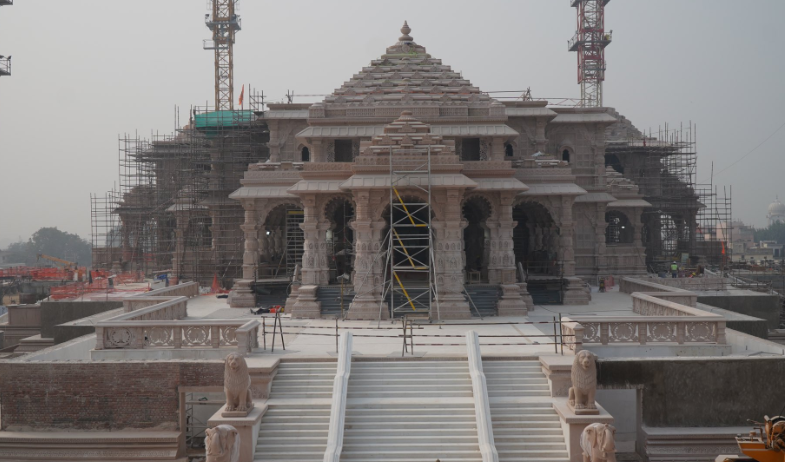
In a groundbreaking feat of architecture and devotion, the newly constructed Ram Temple in Ayodhya stands tall, embodying the rich cultural and spiritual heritage of India. This grand structure, devoid of iron or steel, is a testament to the collective wisdom and dedication of the craftsmen and engineers who meticulously carved the elegant sandstones sourced from Rajasthan’s Bansi Paharpur area.
Champat Rai, the general secretary of the Sri Ram Janmabhoomi Teerth Kshetra, expressed that the temple’s construction is the result of the collaborative effort of some of the best minds in the country. The entire temple superstructure, eventually reaching three stories (G+2), spans 380 feet in length, 250 feet in width, and soars to a height of 161 feet. The traditional Nagara style architecture is adorned with intricate carvings of Lord Hanuman, deities, peacocks, and floral patterns, giving the structure a divine aura.
Overcoming engineering challenges, the construction team established an “artificial foundation” to address unsuitable ground conditions. Visitors will ascend 32 steps from the eastern side to reach the main temple, where they will be greeted by ornate statues of elephants, lions, Lord Hanuman, and Garuda, all crafted from the same Bansi Paharpur sandstone.
The temple complex features a unique rectangular periphery called percota, typically found in southern Indian temples. Spanning 732 meters with a 14-foot width, the percota encases the temple, creating a distinctive architectural setting.
Sanjay Dhawalikar, head of the floral decoration team, shared that more than 3,000 kilograms of flowers from over 20 varieties have been used to embellish the grand structure for the consecration ceremony.
The temple compound, covering 70 acres, prioritizes environmental sustainability. Approximately 70% of the complex will be a green area, including a dense green belt with over 600 preserved trees. The atmanirbhar (self-reliant) complex boasts its own sewage and water treatment plants, a fire brigade post, and a dedicated power line. The greenery extends to areas where sunlight hardly filters through, creating a serene and natural environment.
Prime Minister Narendra Modi is expected to visit the ancient Shiva temple at Kuber Tila, which has been revitalized as part of the larger temple complex.
The Supreme Court’s historic verdict in 2019 resolved the temple-mosque dispute, paving the way for the construction of the Ram temple at the disputed site. The ruling also mandated the allocation of an alternative five-acre plot for the construction of a mosque, solidifying the significance of Ayodhya’s Ram Temple as a symbol of unity and religious harmony in India.
Sources By Agencies

